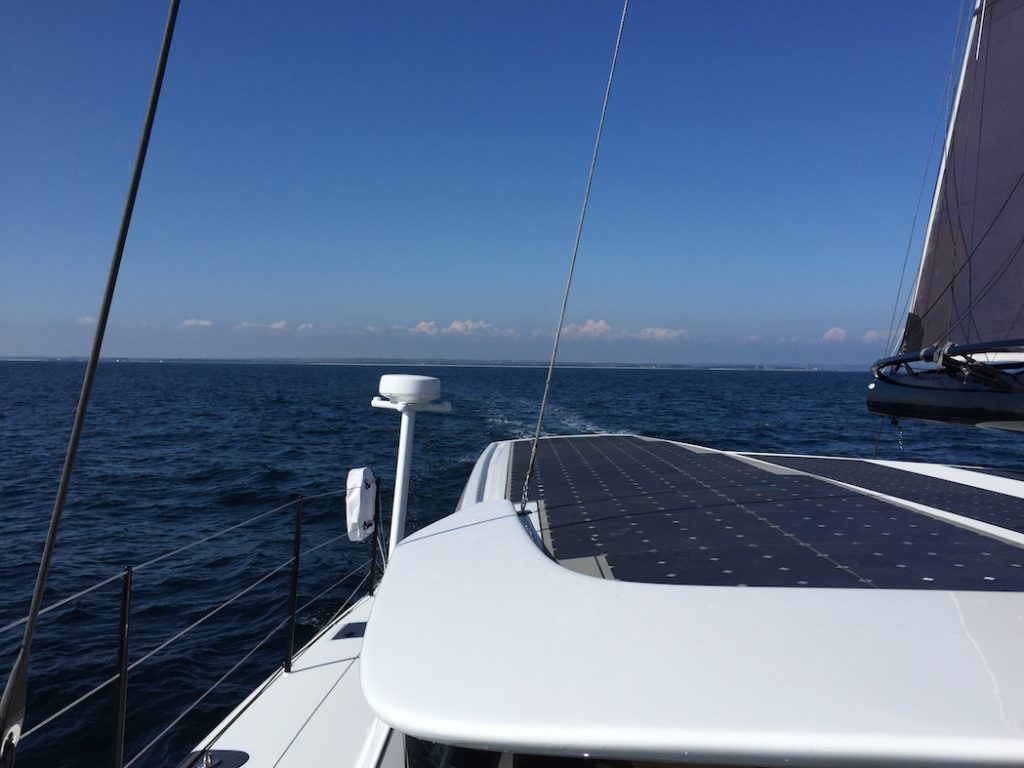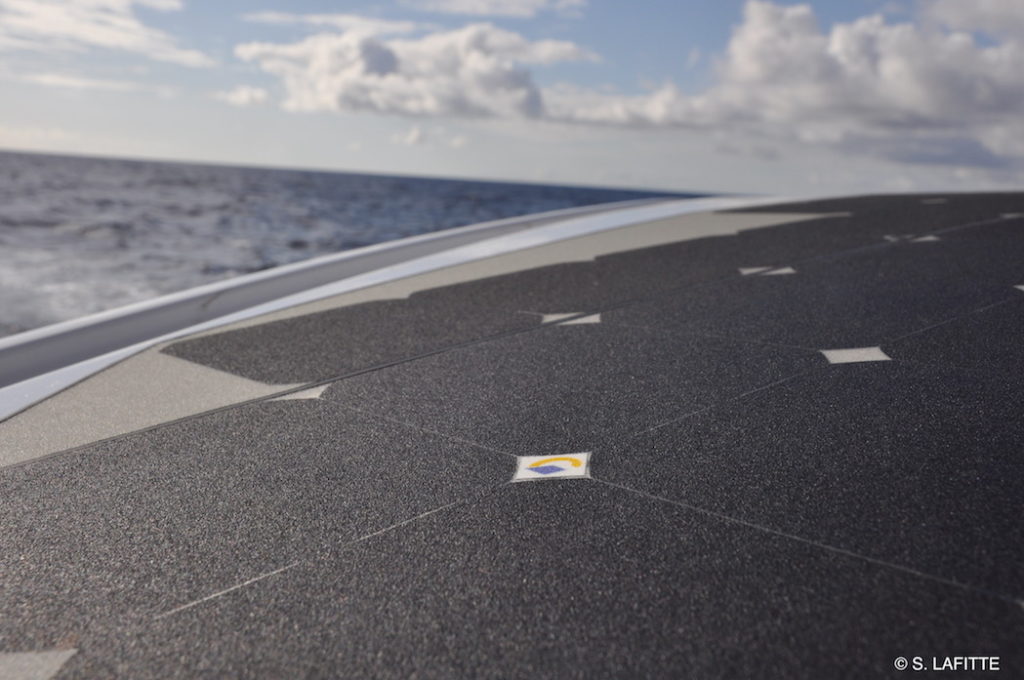As mentioned in one of my previous posts [Moonwave – Deep Blue Hybrid System] – it was part of refit to get Moonwave equipped with a serious amount of solar panels. In the last years the solar panels made huge performance progress and the solar cells themselves got lighter and more versatile.
In the past some yachts got equipped with rigid panels that are fragile, heavy and “no step on” on the coach roof. We also heard “horror”- stories about solar installations on carbon cats that had either leaking panels (water or even worst electricity) installs or unprotected wires that shaved through that created either electrical connectivity with the roof and carbon or even started fires. From all those experiences and proven stories, we knew for sure that we wanted a professional install and a high end product.
Probably the most difficult part of the whole solar panel project brief was to make them look good and nicely integrated in the whole boat design. There are lots of boats around with plenty of panels but they often look like patchwork blankets.
We got a couple of offers from different suppliers but for some the project was too big for them. Or they were only supplying the panels but not the installation and integration. Some also got rejected as the esthetic criteria wasn’t satisfied. Here I also have to mention, that the solar installation is apart but the produced electricity gets integrated in the Torqeedo Deep Blue Hybrid System to either charge the low voltage or the high voltage battery bank.
Through some other boat related connections we got recommended Rachel from Osprey Technicals for our project. With their solar partner Gochermann from Germany – manufacturing the panels and doing the install – they accepted our challenge and got us a great product and result.

The approximate 20sqm of Moonwave’s coach roof got split in 8 section with a minimum of cable passages through the structure and all the panels have an additional layer of insulation between them and the painted surface. The additional insulation is probably a bit overkill but “better safe than sorry”. The panels themselves are less than one mm thick.
The panels themselves are coated with a non-skid cover that makes them walkable and a non-slippery surface when working on the boom – for example hoisting or dropping the main sail. The non-skid coverage of the solar panels is much more effective than the deck non-skid paint and better than what we have seen on other boats so far.
Now as we were sailing in sunny areas, we are very impressed by the performance of the solar installation – it’s keeping up with our house loads and filling up the battery banks the whole day long – as long as there is sun…
Enough explanations – enjoy the pictures and judge yourself…




